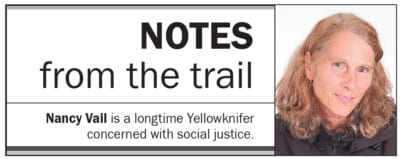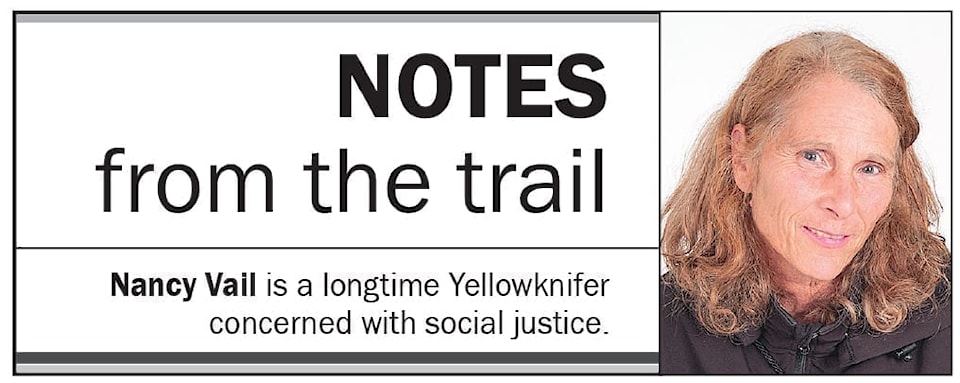Last Tuesday, the first day of the Geoscience conference, I was asked to spend $200 to listen to a GNWT expert talk about its plans for the expansion of the Taltson Dam even though our tax dollars were used to subsidize that gathering.
It was the first time anyone from the government had talked publicly about this mega-project. Why this was important to me and why I think it should be to everyone is that the government is planning to spend upwards of $2 billion on a massive infrastructure development that has immense financial and environmental implications.
The project came to the spotlight again last February when the federal government announced it would contribute close to a million dollars to prepare for the major research portion which includes spending another $18 million over three years to determine what the roadblocks might be.
What we know is that the expansion would increase the existing Taltson Dam's hydroelectric capacity from the current 18 megawatts (MW) to 60 MW. That would happen sometime before 2030. Eventually the idea is to extend power lines from the current site in the South Slave to Alberta, Saskatchewan and later to feed all of Canada. If that happens, the generating capacity could jump to 240 MW. No wonder the engineers are so excited.
Predicted cost of the first leg is around a billion dollars. We know there is typically a problem with cost overruns in the NWT, and that is also the case with all recent hydro projects in southern Canada, so it will probably come in at $1.5 or $2 billion, conservatively speaking.
The territorial government has said the expanded dam will reduce CO2 emissions by 30 percent by weaning people off diesel. Great, however, there are projections that 85 percent of the hydro produced will be used by the mines (sold to them at discounted rates), and not NWT residents. Many are asking why the mines are not bearing the costs since they will be the main beneficiaries. Their projects, it seems, should be self-supporting.
In addition to all of this, there is currently NO market – no mines or any other industry – for any new electricity this dam might produce. The hope that there will be is only a gamble. A whispered solution is giving the development a P3 (public-private-partnership) status, like the new Stanton Hospital, which could mean that while governments pay for construction, the dam would be privately run. A nurse in the new hospital recently said that even trying to replace a roll of toilet paper involves phoning a toll free number and submitting a request. Do we want a similar scenario with a billion dollar dam vulnerable to heaving permafrost melts?
Powering Alberta?
To top it all off, there are rumours that one potential customer might be the Alberta tar sands. How do we feel about that?
Most important are the environmental impacts. The plan is to build a road along the power line right-of-way to serve new mines east of Yellowknife. This will have major effects on forests, caribou, the Canadian Shield, and waterways when we can least afford it. And how will all of this affect declining water levels?
One of the biggest initial worries is who will do the research and who the researchers will talk to. The first public presentation on the expansion Nov. 19 was to engineers and reps from the mining sector. That's an easy sell. But where previous NWT governments have gone wrong is that they did not talk to people from every sector. That must include environmentalists, conservationists, First Nations groups and industrious entrepreneurs looking at alternative energy solutions. There is a certain irony that while the GNWT was showing off its proposed project, the Yukon government, which has declared a climate emergency, was announcing a 142-point action plan to offset the threat and impacts of climate change.
One thing for sure, the GNWT needs to talk to ordinary people – you and me – NOW, through town hall forums, lunch hour sessions and open houses. Our territory is in trouble and the impacts of climate change have just begun. We need to look for innovative solutions if we hope to save this beleaguered planet of ours.
Are costly dams really a step in the right direction? These are questions we all need to consider before the push for this mega project goes too far. After all, we, the people, will be footing the bill.
The people of the NWT who care about the planet and are looking out for the generations to come deserve to know what is going on and have a real say in these decisions.
